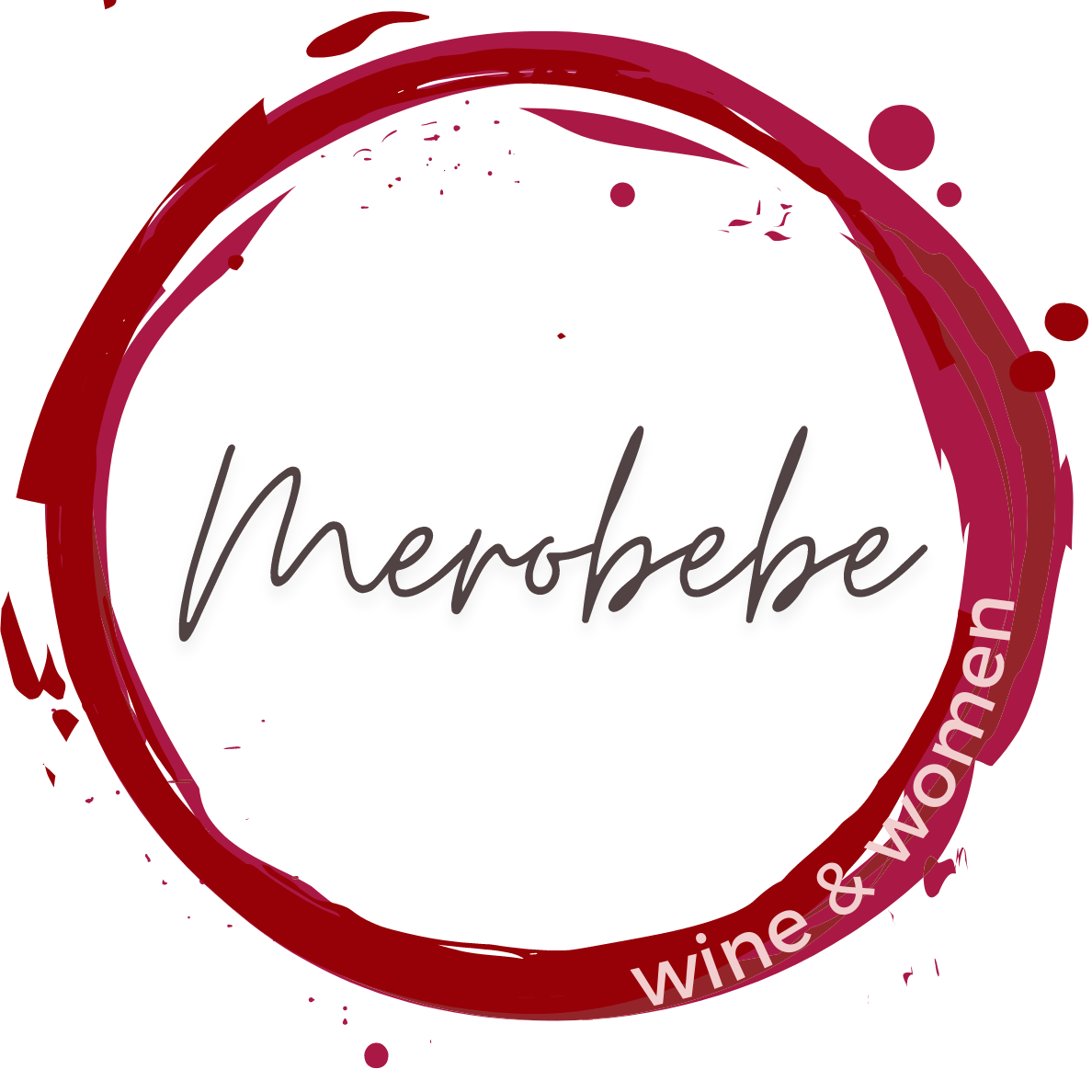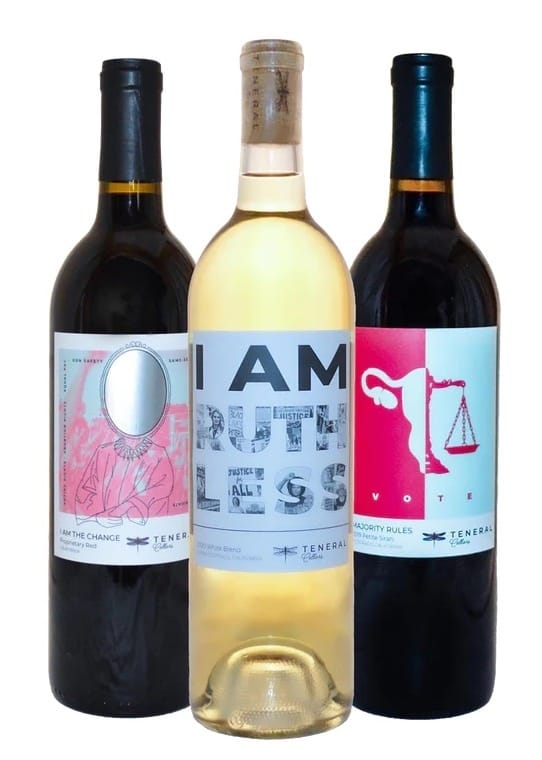
Happy Wine Wednesday!
In anticipation of Pinot Noir Day on Friday, we’ll be talking all about the delicate and delicious red grape, then chatting with Jill Osur! She was our featured Woman in Wine for the inaugural issue earlier this year, and I’m bringing her back for our new readers who may not know about the amazing work she is doing at Teneral Cellars.
So, pour yourself a glass and let’s get our wine nerd on.

Pinot Noir
Red, White, Pink, and Bubbly
I have a confession.
I actually (thought I) didn’t like pinot noir for the longest time. I was always a cab and steak kind of person, and thought all pinots were just way too light and overly jammy for my taste. Thankfully, some very persistent pinot lovers in my life have brought me to the light (badum chhh). If you’re reading this and you feel the same way, hopefully this issue will encourage you to give pinot another chance!
Let’s start with a fun fact: pinot noir gets its name from the French words for “pine” and “black” because the grape clusters are small, tightly clustered, and of a dark red color…like a juicy black pinecone.
Next, a quick history on pinot noir:
While we don’t know for sure, pinot is thought to have originated in northeastern France (around Burgundy) more than two thousand years ago. Outside of being delicious, it’s an important grape in the wine world as it’s considered to be the ancestors of many other popular varietals, like gamay and chardonnay, and the likely grandparent of syrah (according to geneticist Dr. José Vouillamoz).
Because it’s been around for so long and is a bit unstable genetically (aren’t we all?), there are many, many pinot noir clones out in the world. Some of the ones you may have heard of include pinot grigio (or pinot gris), which is a color mutation, and pinot meunier, a red grape that’s grown in and used to make Champagne (more on that in a bit).
Today, pinot noir is the 6th most planted red grape variety in the world, and is grown virtually everywhere : France, Chile, Australia, New Zealand, Italy, Germany, Argentia, the United States, and beyond. Needless to say, it’s one of the most well-known and most popular red wines in the world!
Even though pinot noir grows so widely, it’s actually one of the more difficult grapes to grow. These small grape clusters with thin skins need cooler climates, are really delicate and super sensitive to changes in their climate and the soil, and also susceptible to vineyard diseases. Even after you’ve successfully grown the grapes to ripeness and harvest them, pinot oxidizes much more easily than other varietals during the winemaking process. This makes pinot noir really risky to make – and potentially the cause of a very expensive failure! In fact, wine makers often call it the “heartbreak grape.” Basically, it’s the black diamond of winemaking…which is probably why it’s so enticing to make. Also because people love it!
So why is this grape so popular?
Think back to the last time someone (preferably a wine snob) described a red pinot noir to you.
Delicate. Silky. Elegant. Supple.
Wine people get pretty sexy when we talk about pinot noir! The Wine Bible’s Karen MacNeil even goes as far as saying “erotically earthy,” and notes that a famous Californian winemaker told her that a great pinot “always possesses ‘a hint of corruption.’” She also notes that some pinot noirs have “what’s sometimes in Europe called animali – a highly attractive male sweaty smell.”
(Men, this is not a sign to stop wearing deodorant.)
Clearly, pinot noir does something to people. So what does pinot noir smell and taste like – other than hot sweaty men and sexy dirt?
It is lighter in body and less tannic (meaning bitter or astringent) than cabs or syrahs. You’ll get acidity with notes of red fruit - think strawberry jam, plums, rhubarb, raspberries, cherries – earthy mushroom notes, and some rose and hibiscus floral notes as well. It’s like a little bowl of berries with shaved truffles on top next to a bouquet of roses. A great pinot noir truly is elegant, silky, and delicate.
Just like other wines, you’ll find different styles of pinot noir from different winemakers around the world. Personally, I love earthier pinot noirs, while others may prefer jammier fruit bombs. If you, like old me, are a pinot hater, try a bottle from a producer or country you’ve never tried before! And please don’t order the house red pinot and decide that’s why all pinot sucks…
Here’s a quick, oversimplified description of pinot based on the region where its made:
Burgundy, France: Earthy and floral. Try a pinot noir from Pommard (more full-bodied), Chambolle-Musigny, or Gevrey-Chambertin (some spice and smoke)
California: More fruit-forward and lush with notes of vanilla and caramel. Try some pinots from Santa Ynez Valley and Carneros!
Oregon: The most similar in style to Burgundy pinot noir in the States. More cranberry and cherry notes with mushroom aromas
Germany: Known as Spätburgunder here, these pinots are similar in style to Burgundian pinots but for a greater value. Try some from the Baden and Ahr regions
New Zealand: Vibrant fruit and earthiness. Try pinots from Central Otago (some minerality), Marlborough, and Martinborough (some savory notes)
While we’ve focused on red pinots, you can’t talk about pinot noir and not mention its key role in the rosés of the world and in Champagne! Plus, if you’re lucky and keep your eyes peeled, you may spot a white pinot noir…
While we’ll do a deeper dive into Champagne another day, the main thing to note here is that Champagne must be made with chardonnay, pinot noir, and/or pinot meunier (a clone of pinot noir). Pinot noir is a key provider of structure, depth, and aging potential in Champagne, along with the red fruit notes we talked about above. To really get a sense of how pinot influences Champagne, try a Blanc de Noirs (a Champagne which must only be made from black grapes, meaning pinot noir or pinot meunier).
Onto the summer favorite: rosés.
The fruit forward notes and bright acidity makes for a great rosé! Pinot rosés tend to have notes of strawberries, pomegranate, and roses. Depending on the producer, you may also get some earthier notes or some smokiness! In California, you may also find pinot noir rosés made in a specific style called Vin Gris (“gray wine”), which is a very pale pink due to the limited skin contact.
And finally, the rare white pinots.
These pinots are typically darker in color compared to other white wines with a pale to rich golden yellow hue. Unoaked white pinots are tart and brisk with notes of honey, and can be found in Alsace and Champagne in France. Oaked pinots, popular in Oregon and California, are made like a buttery chardonnay and come out like a lemon tart or candied orange brulée with baked apple flavors.
While white pinots are definitely not easy to find, you may be able to spot a bottle from the regions above or Germany and Italy, where they are more common!
Pinot noirs, in my opinion, are one of the most fun wines to do side-by-side tastings of. Try a rosé and red from the same producer, or try comparing pinots from two different regions – or even two producers from the same region! You’ll find that there truly is a pinot out there to bring out the pinot lover in all of us.

Jill Osur
Founder & CEO of Teneral Cellars
This interview has been edited for clarity and truncated for the newsletter. You can find the full interview here.
Merobebe
Not only is Teneral Cellars 100% female-owned and operated, but you also donate 10% of all of the sales to charities that empower women and promote gender and racial equality.
What goes into picking the charities that you donate to – and for those who don't know, each quarter you come out with a different [wine] pack [with proceeds] that goes to a different charity.

Jill Osur
Part of it is what's happening in the world. I started Teneral Cellars to harness the power of business for good and to use wine as a conduit for change, but really the focus is on reshaping the wine industry to reflect its largest customer, which is women.
Almost 70% of all wine is purchased by women, but the industry doesn't come close to representing that. I think the number is maybe 14% female winemakers in California, but in [the United States] it's only 10% female. 0.1% Black winemakers, men and women. Female sommeliers, not all of them, but a majority of them are still making $0.70 on the dollar to their male counterparts. And when you look at the industry as a whole, even though there are women in tasting rooms, there are very few women in leadership positions and even fewer women of color.
Everything for me goes back to: how are we elevating women? How are we inspiring change and how are we being disruptive in what we do so that we can actually impact the number of the Global Economic Forum study, which says it's going to take 208 years in this country for women to achieve full equality if we don't do things disruptively differently?
What are those important topics? Some people might say, “is that political?” I don't think women's fundamental human rights are political. I don't think that when we're talking about women's health and the inequities that exist in healthcare, it's political.

So a lot of it is what's happening in the world. We try to plan as far out as we can but, like last quarter, when Roe was overturned and literally women's fundamental human rights were under attack, we did a “Ruthless” collection [celebrating Ruth Bader Ginsberg] so that we could focus on the fact that there are 52% women in this country, and there are simple things we can do so that nobody can take away that power.
We supported supermajority so that we could talk about majority rules, and we could talk about how we can vote with our dollar and be intentional and conscious about that. No one can take that away from us.
We can shift the dynamics in this country toward the majority, which are women. We wanted to focus on, “what does it mean when we attack women's rights?” and using female artists to create beautiful labels so that we can open up those necessary conversations. And also just giving amazing links to information because, you know what? Not all of your friends may agree with you, but our hope is that the wine will bring you all together to have the important conversations. If we can give you tools and conversation starters and real links to facts that you can print out that you can even use with the people that may disagree with, you can find those points of connection and use wine to do that.
Merobebe
Because you work with 100% women-owned vendors, has it been difficult to find vendors, just because there are so few women in the wine industry?
For example, I live in Los Angeles and Hollywood is always like, “Well, we couldn't find an Asian actor, we couldn't find xyz actor, so we had to cast a white person.”
Jill Osur
Can we just call B.S. on that? I think when people say that, they didn't put the time and effort into doing that. And what's sad for me about that is that you truly are missing out on a diversity of voices and experiences and true representation which is so important. So to answer your question, yes, it's been challenging on a few fronts.
It was challenging to find a women-owned company that prints wine labels. Printing, no biggie, but printing wine labels. We found one, and the first one we weren't necessarily happy with the quality of their production, but now we have a fantastic women-owned printing company - they do amazing stuff. The other one that was challenging was finding a fulfillment house, but it turned out that probably the one that's closest to us up here where we are in El Dorado County is women-owned.
It's a mom and her daughter [that] run the company. It's fantastic. I do want to clarify – I started out with 100% women-owned [vendors/partners]. And I did transition to either women or minority-owned businesses because for me, yes, our focus is on women. But if I can also hire minority-owned business people that have been marginalized, it's making the right kind of impact.
We have a Black-owned company that helps us with some media buying. It's not majority-owned by a woman, but I feel very aligned that that is still the right play for us to make the kind of impact we want to make in the world.
Merobebe
What are some other ways you think that the wine industry can better support and also promote the work of female or minority wine producers or owners?
Jill Osur
I think they have to take a step back and take an honest look at themselves and look at who their biggest customers are, because the industry isn't reflecting that. And I know the wine industry – we're not [so] isolated that we're the only one that has bad representation. I know [in] the music industry, there's only 10% female writers and producers.
And there's no way that – to your point earlier – it's like, “oh, we can't find any women that produce.” No, that's not the case. The majority of classrooms in wine right now, the seats are occupied by women but they're not necessarily being hired. And yes, there are lots of new female winemakers now that are starting their own companies.
But we need to really get the bigger companies to make that difference and to recognize how not only male dominated it is, but white male dominated, and to look at the necessary representation that is needed. It's wonderful that Black Girl Magic Wine [by] The McBride Sisters is doing well and getting huge support, but they can't be the only one.
Because if 70% of wine is purchased by women, then we should have that kind of representation on the shelf. I know a lot of big companies are doing their supplier diversity initiatives. I do believe they need to be a little more aggressive on that other than just posting that or saying that they're very committed to doing that.
There are big brands like Constellation Brands that are investing in women and minority-owned companies and circling them with expertise. I think that's a wonderful thing. But I do feel like there needs to be more public commitments to really shaking up the C-suite and giving women more opportunities to really move up that leadership ladder in the wine industry.

Teneral Cellars’ new tasting room and boutique hotel in Amador Wine Country, CA
Merobebe
That brings me to my last question. You mentioned that women sommeliers make $0.70 for every dollar a male sommelier makes, and also say that women are supertasters. What does that mean? How are we supertasters?
Jill Osur
A woman’s palate is an amazing thing. There's an official test to become a supertaster, and there [have] been more women that have qualified as supertasters.
I think part of it is – I'm totally making this up from my own intuition – but I feel like women are more in touch with what we feel, and what we feel has a lot to do with what we taste and smell. I think there is something really beautiful about that.
I love the connection between tasting and smelling, and when all of your senses are heightened, it's like life, right? It's the energy you put into it, the love you put into making wine, how you enjoy it, how you sip it. But everyone has a unique palate. Your palate is uniquely yours. Mine is uniquely mine. I don't want to go drink a wine because somebody says I should drink a wine. I'd like to drink a wine that really pairs perfectly with my palate.
That’s why we brought this woman-owned technology on our website called Tastry. They've tested 179 million palates, they've tested our wines, and it's a 20 to 30 second test.
You take the test, it will shoot you back wines from Teneral Cellars that pair perfectly with your palate. And when you click on it, you'll see where the acid is, where the minerality is, all of these different things. You can start to understand your own palate so that that now, you'll maybe understand that when you say “I don't like chardonnay,” that you actually don't like buttery and oaky chardonnay, but you might really love a stainless steel chardonnay because it presents itself completely differently.
That's always a joy for me when I'm tasting. You know, two of our three chardonnays are unoaked, and it's just always fun when people are like,” Oh, I really like that!”
We just released one that has a little oak on it. It's not over the top oaky and buttery, it's more of a mainstream. I [think] that everyone should just find the wines that they really like and also find the winemakers they like.
Because somebody will say, “I don't like merlot.” And I'm like, “well, is it for a reason other than the movie Sideways? Or what is it that you don’t really like?” And then I explain, you could give five different winemakers the same exact fruit and the wine will present itself in five very different ways because that's the artistic expression of a winemaker.
It's really about finding the styles you like, finding the winemakers you like. It's also obviously important for me that you find producers that sustainably farm and produce so that you're not putting toxins and chemicals in your body and damaging Mother Earth. But that's my preference.

Get a wine-related movie or book pairing for your weekend.
Today’s pairing is The Vineyard by New York Times bestselling author María Dueñas
Set in Mexico, Cuba, and Spain in the 1860s, this novel follows a debt-ridden Mauro Larrea after he gambles the last of his money to win a neglected house and vineyard in Spain. His plan is to go to Spain, sell the property, then go back to Mexico – until the wife of a British wine merchant derails his plan, determined to get her family’s legacy back. From Mexico to Cuba to Spain, Dueñas describes a world of family intrigue, ancient vineyards, and flourishing historic cities as Larrea ends up vowing to restore the vineyard back to its former glory.

Time to go get some pinots!
As always, hit the reply button to let me know what you thought about the issue, introduce me to a badass woman in wine, suggest a wine topic, or to say hello and share your favorite Trader Joe’s wine finds…
Have a great Pinot Noir Day and weekend, and see you next Wednesday!
Cheers,
Megumi
Have questions or feedback? Want to suggest a wine topic, woman in wine, or vinotainment pairing? Just reply to this email!




Copyright (C) " target="_blank">unsubscribe
